Ride-sharing not helping to cut emissions: Bad news for those hoping the explosive growth in Uber and Lyft rides in recent years would mean less car ownership, gasoline consumption, and air pollution in crowded cities. It’s actually getting worse. According to a new study by the Union of Concerned Scientists, ride-hailing trips today produce an estimated 69 percent more pollution on average than the trips they displace in the US. In cities, these  rides provided by Uber, Lyft, Via, Curb, and other firms, are usually taking away even more low fuel consumption and displacing mobility such as public transportation, biking, or walking. UCS recommends that these companies take efforts to electrify their fleets and increase their pooled rides. “For ride-hailing to contribute to better climate and congestion outcomes, trips must be pooled and electric, displace single-occupancy car trips more often, and encourage low-emissions modes such as mass transit, biking, and walking,” the report says.
rides provided by Uber, Lyft, Via, Curb, and other firms, are usually taking away even more low fuel consumption and displacing mobility such as public transportation, biking, or walking. UCS recommends that these companies take efforts to electrify their fleets and increase their pooled rides. “For ride-hailing to contribute to better climate and congestion outcomes, trips must be pooled and electric, displace single-occupancy car trips more often, and encourage low-emissions modes such as mass transit, biking, and walking,” the report says.
But that’s a tough sell for fleets of driver-owned cars and self-employed workers struggling to make a living in ride hailing/sharing. When you take an Uber or Lyft ride, you’ll usually be picked up in a small, fuel-efficient car or crossover utility vehicle. It could be in a Kia Optima or Kia Sportage, a Honda Civic, a Toyota Yaris, a Nissan Rogue, and occasionally in a traditional Prius hybrid. Customers are not going to get a ride in an all-electric or plug-in hybrid vehicle, unless things change. And group rides of three or more passengers can be very inconsistent for customer satisfaction; such as one passenger in a business suit angry about having to wait until being the last drop-off and maybe miss their flight.
Startup truck maker Nikola going public: On Tuesday, hydrogen fuel cell truck maker Nikola Motor Co. announced that it’s merging with a publicly listed acquisition company called VectoIQ. The transaction is expected to close sometime in the second quarter of this year, and when it does, Nikola will be listed on the NASDAQ exchange as NKLA. The Phoenix-based truck maker will receive $525 million in new investment as a result, adding to an existing stockpile of that same amount that it previously raised across three rounds of funding; and through a joint venture the company started in Europe. Nikola and its backers see much potential in the zero emission commercial truck market as several countries are implementing greenhouse gas rules that are coming to trucking the same way light-duty vehicles are seeing it happen in several countries.
Nikola has developed three different trucks, with a pickup concept being announced not long ago. Nikola also has a grand plan to deploy a hydrogen fueling station network across America, ideal for commercial truck drivers who wouldn’t be able to find hydrogen fuel pumps otherwise. The company also has versions of its trucks that are battery-powered, too, for end users that don’t need as much long range driving as the hydrogen-powered versions of the trucks can offer. Editor’s note: I’ll have a second market report coming out soon (see below for more on the first one) entitled Hydrogen is finally here — but there are five hurdles to clear, with more on Nikola and other companies in the field.
Demand and interest in EVs in a few states: If you take a look at this map created by auto site partcatalog.com, the Ford Bronco had the highest search rating in 19 states by car shoppers looking at vehicle refreshes and introductions set for this year. It’s also interesting to see that the upcoming Tesla Model Y took three states (California, Washington, and Hawaii) and the Rivian R1T took the top spot in two states (Vermont and Delaware). The Ford Mach-E, an electric Mustang SUV, won top interest in Idaho and Rhode Island. Partscatalog.com utilized Google trends data covering January 1 through the first week of February, looking at consumer interest in vehicles set to be released this year.
New Green Auto Market report: Will we see transformation of ground transport by 2030?
Will we be riding to work in electric, autonomous, shared vehicles a decade from now? Will the traditional internal-combustion engine auto manufacturing industry be clearly transformed into a new age? Could we witness steadily declining new vehicles sales; younger consumers moving away from car ownership; electric vehicles becoming more important to automakers and vehicle owners than cars and trucks powered by internal combustion engines; autonomous vehicles clearing regulatory hurdles and starting production; connected car features playing a significant role over the next decade; and mobility services leading the way in traffic- and smog-congested cities. For those of you who may have missed my coverage and analysis of these topics last fall, all of it is explored and updated in a new report, Will we see transformation of ground transport by 2030? Here’s the link for those who are interested.
Audi eTron beats Model 3: The Tesla Model 3 got trounced in Norway sales during February, with the Audi eTron doing very well in Europe’s hottest battery electric vehicle market. The eTron sold 1,131 units last month and the Model 3 only had 53 units sold. However, Tesla typically back-ends its quarterly cycle where about 50 percent of the volume takes place in the third month. The company should be doing a lot of catch up in March. The Volkswagen eGolf came in second at 740 units sold. That model will be replaced by the VW ID.3 later this year.
Smart cities meet 5G: Smart cities will soon become one of the most important testing grounds for 5G technology and business models, according to a new Navigant Research study. The next generation wireless/cellular phone network is expected to much faster and load-intensive than 4G, but there’s been a battle over the technology going into the networks along with government communication regulations affecting the outcome. Carmakers and their tech partners are quite interested in how all this will go. The Navigant study looks at a few key areas that some of the challenges will have to be resolved for full integration of smart cities and 5G: cybersecurity, data privacy, the impact of automation, and issues of digital exclusion. The study also explores the strategies of global carriers and infrastructure vendors that are leading the development and deployment of 5G networks.
Daimler launching electric truck test project: Daimler Trucks North America is launching the Freightliner Customer Experience (CX) Fleet for its electric truck program. The fleet of all-electric pre-series trucks includes six heavy-duty Freightliner eCascadias and two medium-duty eM2 106 trucks. Fourteen of Daimler’s commercial customers will be participating in the test project. Data collection will take place over the next 22 months/ DTNA will analyze data and feedback from the CX Fleet to continue to improve upon future vehicle design and assist customers navigating a transition to electric fleets. “It’s critical that we collaborate with customers across multiple segments to further our understanding of how commercial battery electric trucks will be part of a long-term solution in CO₂-neutral transportation,” said Richard Howard, senior vice president, On-highway sales and marketing, DTNA.

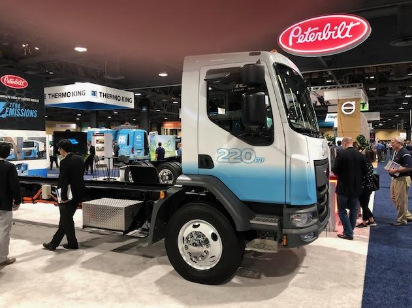 medium and heavy trucks along with commercial applications such as electric delivery and refuse trucks. This time major truckmakers took center stage, and specialized makers had announcements to share as well. With about 4,000 attendees, it was the largest ACT Expo yet.
medium and heavy trucks along with commercial applications such as electric delivery and refuse trucks. This time major truckmakers took center stage, and specialized makers had announcements to share as well. With about 4,000 attendees, it was the largest ACT Expo yet.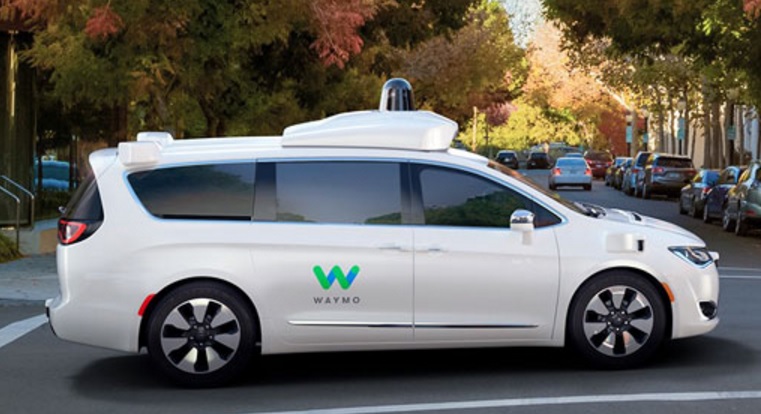 vehicles won’t be as safe as vehicles currently on roads. Nearly two-thirds of the U.S. adults participating in the survey said they would not buy a fully autonomous vehicle, and the same amount balked at the prospect of paying significantly more for the added features. AVs will be staying in the test phase for a few more years. Companies such as General Motors, Tesla, Waymo, Alphabet, Uber, and Lyft, will continue testing the technology and trying out convenient mobility and shared ride experiences for users. Fleets will continue playing an important role in advancement of the technology through projects such as truck platooning, electric automated shuttle vans, and urban delivery showing positive signs of potential for adoption. Safe travel is a key issue, as Tesla and Uber have discovered in fatal incidents involving AV technology in recent years. But as marketers of electric vehicles know, building up mass adoption of a radical new technology takes millions of miles and a few years of positive driver experiences.
vehicles won’t be as safe as vehicles currently on roads. Nearly two-thirds of the U.S. adults participating in the survey said they would not buy a fully autonomous vehicle, and the same amount balked at the prospect of paying significantly more for the added features. AVs will be staying in the test phase for a few more years. Companies such as General Motors, Tesla, Waymo, Alphabet, Uber, and Lyft, will continue testing the technology and trying out convenient mobility and shared ride experiences for users. Fleets will continue playing an important role in advancement of the technology through projects such as truck platooning, electric automated shuttle vans, and urban delivery showing positive signs of potential for adoption. Safe travel is a key issue, as Tesla and Uber have discovered in fatal incidents involving AV technology in recent years. But as marketers of electric vehicles know, building up mass adoption of a radical new technology takes millions of miles and a few years of positive driver experiences.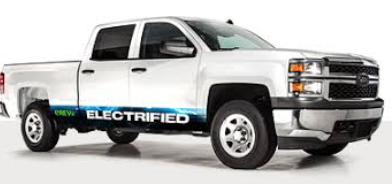 mercial vehicles, starting with
mercial vehicles, starting with  bridges. New York City would be joining other metros like London, Milan, Stockholm, and Singapore that have enacted similar charges. China is taking similar actions to address thick traffic congestion and severe air pollution. Manhattan is known for some of the worst traffic in the nation, with average speed in the Midtown area estimated to be at 4.7 miles per hour.
bridges. New York City would be joining other metros like London, Milan, Stockholm, and Singapore that have enacted similar charges. China is taking similar actions to address thick traffic congestion and severe air pollution. Manhattan is known for some of the worst traffic in the nation, with average speed in the Midtown area estimated to be at 4.7 miles per hour. played an order for 125 of Tesla’s new all-electric Semi tractors. It falls into the company’s extensive clean transportation fleet that includes vehicles powered by electricity, natural gas, and propane. Tesla Semis are poised to usher in a new era in improved safety, reduced environmental impact, and reduced cost of ownership, UPS said in a statement. Last week, PepsiCo Inc. had placed the largest Semi order with Tesla at 100 units in its efforts to reduce fuel costs and fleet emissions.
played an order for 125 of Tesla’s new all-electric Semi tractors. It falls into the company’s extensive clean transportation fleet that includes vehicles powered by electricity, natural gas, and propane. Tesla Semis are poised to usher in a new era in improved safety, reduced environmental impact, and reduced cost of ownership, UPS said in a statement. Last week, PepsiCo Inc. had placed the largest Semi order with Tesla at 100 units in its efforts to reduce fuel costs and fleet emissions. Group, will become chairman of the high-speed transportation company. Branson joined the board of directors in October after Virgin Group invested in the company. The company has also completed its third phase of testing achieving historic test speeds of 387 kilometers per hour (240.4 miles per hour). Branson is internationally known for achievements in air, rail, and space transportation, and his commitment to sustainability.
Group, will become chairman of the high-speed transportation company. Branson joined the board of directors in October after Virgin Group invested in the company. The company has also completed its third phase of testing achieving historic test speeds of 387 kilometers per hour (240.4 miles per hour). Branson is internationally known for achievements in air, rail, and space transportation, and his commitment to sustainability.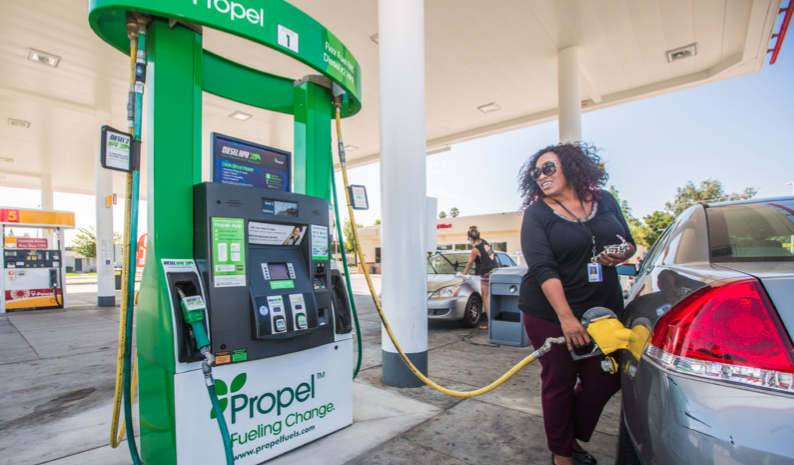 the impact of California’s Low Carbon Fuel Standard on alternative fuel consumption and the effect on emissions in the state. While targets are being met for 2020 goals, the study indicates that the current policy model will need to change to hit 2030 targets that will more than double the volume of expected low carbon fuels to five billion gallons. Propel Fuels and study partner ICF see that possible through flex fuel, high-efficiency diesel vehicles, electric vehicles, and hydrogen fuel cell vehicles. Through its network of fueling statins, Propel Fuels offers E85 made from corn and next generation sources such as switchgrass and agricultural waste material. Its stations also offer high-performance renewable diesel.
the impact of California’s Low Carbon Fuel Standard on alternative fuel consumption and the effect on emissions in the state. While targets are being met for 2020 goals, the study indicates that the current policy model will need to change to hit 2030 targets that will more than double the volume of expected low carbon fuels to five billion gallons. Propel Fuels and study partner ICF see that possible through flex fuel, high-efficiency diesel vehicles, electric vehicles, and hydrogen fuel cell vehicles. Through its network of fueling statins, Propel Fuels offers E85 made from corn and next generation sources such as switchgrass and agricultural waste material. Its stations also offer high-performance renewable diesel.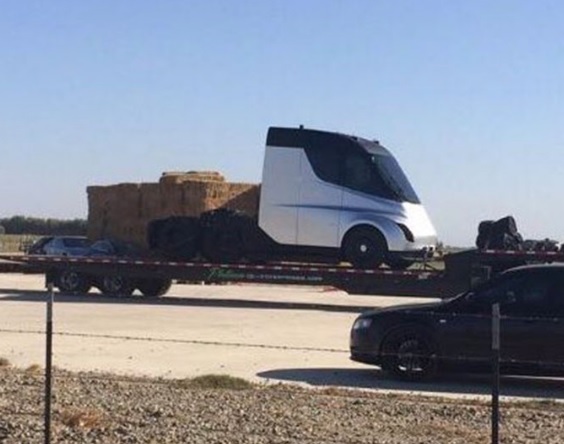 diverting resources to help bring Puerto Rico back through battery production to help the island recover from hurricane devastation. Residents have been going without electricity. Tesla was below its production target to build more than 1,500 Model 3 units in the third quarter. The company had just delivered around 220 Model 3 sedans and produced 260 during the quarter. Earlier this week Tesla reported that “production bottlenecks” had left it behind the planned ramp-up for the Model 3.
diverting resources to help bring Puerto Rico back through battery production to help the island recover from hurricane devastation. Residents have been going without electricity. Tesla was below its production target to build more than 1,500 Model 3 units in the third quarter. The company had just delivered around 220 Model 3 sedans and produced 260 during the quarter. Earlier this week Tesla reported that “production bottlenecks” had left it behind the planned ramp-up for the Model 3.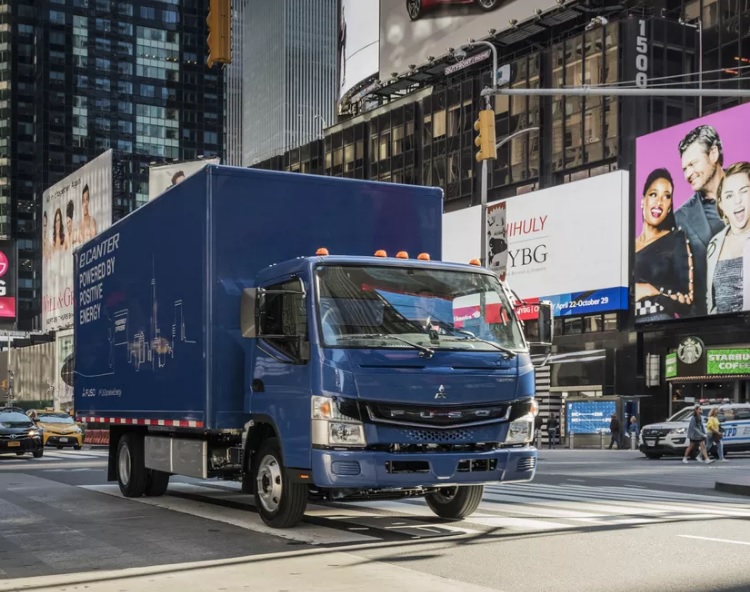 Show in Atlanta on Monday, the two companies announced they’ll be jointly developing an electric medium-duty truck for the North American market. It will roll out as soon as 2019. These two companies forged an alliance earlier this year with VW investing $256 million for a 17% stake in Navistar. During a separate presentation,
Show in Atlanta on Monday, the two companies announced they’ll be jointly developing an electric medium-duty truck for the North American market. It will roll out as soon as 2019. These two companies forged an alliance earlier this year with VW investing $256 million for a 17% stake in Navistar. During a separate presentation, 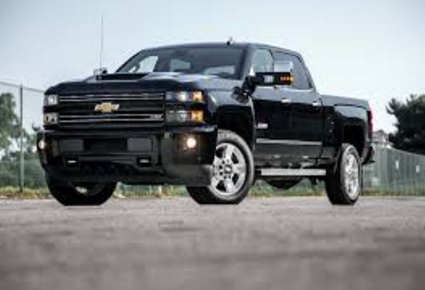 Ram 2500. All three pickups were equipped with four-door crew-cab bodies, turbodiesel engines, and four-wheel drive. While being more efficient than they were years ago, they only achieved 14-15 mpg, which was 1-2 mpg less than their gasoline-powered light-duty counterparts. Contractors and other truck buyers rely on these heavy pickups to buy hundreds of thousands of them per year. The consumer publication wants buyers to be adequately informed.
Ram 2500. All three pickups were equipped with four-door crew-cab bodies, turbodiesel engines, and four-wheel drive. While being more efficient than they were years ago, they only achieved 14-15 mpg, which was 1-2 mpg less than their gasoline-powered light-duty counterparts. Contractors and other truck buyers rely on these heavy pickups to buy hundreds of thousands of them per year. The consumer publication wants buyers to be adequately informed. truck will have a 44,000-lb. maximum payload and about 100 miles of range. That beats Tesla’s announcement, which takes place next month and is expected to focus on a 200-300 mile range electric semi truck. Named AEOS after a four-winged horse-driven chariot from Greek mythology, the Cummins electric truck (built by Roush) follows an announcement in June that the company will bring out an electric bus by 2019. Cummins is looking for vehicle manufacturers to work with and large fleets interested in buying them. For now, the electric heavy-duty truck is in the concept phase. The company is well known by fleets for its natural gas truck engines.
truck will have a 44,000-lb. maximum payload and about 100 miles of range. That beats Tesla’s announcement, which takes place next month and is expected to focus on a 200-300 mile range electric semi truck. Named AEOS after a four-winged horse-driven chariot from Greek mythology, the Cummins electric truck (built by Roush) follows an announcement in June that the company will bring out an electric bus by 2019. Cummins is looking for vehicle manufacturers to work with and large fleets interested in buying them. For now, the electric heavy-duty truck is in the concept phase. The company is well known by fleets for its natural gas truck engines.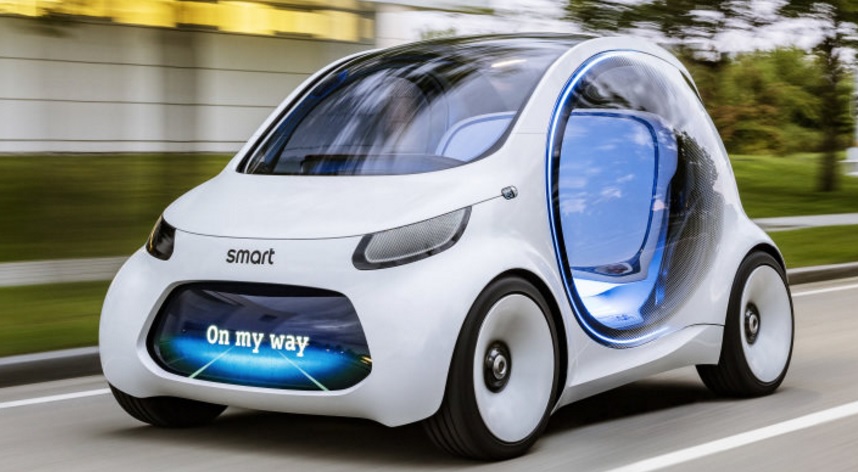 tapping into the company’s CASE philosophy –
tapping into the company’s CASE philosophy – 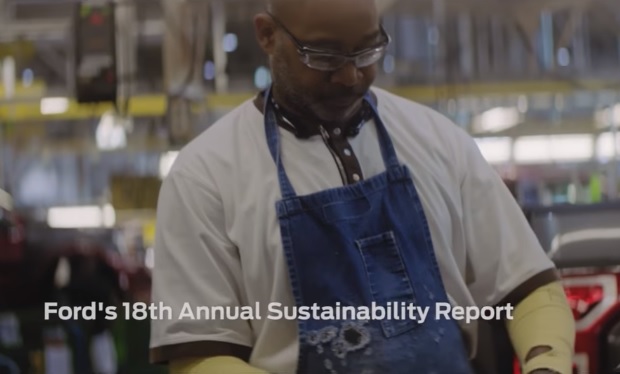 drinkable water in manufacturing. Since 2000, Ford has cut water use by more than 61 percent. It’s partnership with Jose Cuervo continued using agave plants for sustainable bioplastics being placed in Ford vehicles. Now about 300 vehicle parts come from renewable sources such as soybeans, cotton, wood, flax, jute, and natural rubber. Its aluminum closed-loop recycling system recycles about 20 million pounds of military-grade aluminum alloy per month, enough to build more than 37,000 F-Series truck bodies a month. Ford continues to reduce the footprint of its supply chain with an enhanced Partnership for a Cleaner Environment program that has grown to more than 40 suppliers in 40 countries – up from 25 suppliers in 2015. The automakers zero-waste-to-landfill program has been expanded to a total of 82 Ford facilities around the world, where no waste is sent to landfills. You can read the company’s 18th annual sustainability report to learn more, plus read and watch a video on improving safety and fuel economy, reducing manufacturing carbon dioxide, the company global electrification strategy, and sustainable mobility services.
drinkable water in manufacturing. Since 2000, Ford has cut water use by more than 61 percent. It’s partnership with Jose Cuervo continued using agave plants for sustainable bioplastics being placed in Ford vehicles. Now about 300 vehicle parts come from renewable sources such as soybeans, cotton, wood, flax, jute, and natural rubber. Its aluminum closed-loop recycling system recycles about 20 million pounds of military-grade aluminum alloy per month, enough to build more than 37,000 F-Series truck bodies a month. Ford continues to reduce the footprint of its supply chain with an enhanced Partnership for a Cleaner Environment program that has grown to more than 40 suppliers in 40 countries – up from 25 suppliers in 2015. The automakers zero-waste-to-landfill program has been expanded to a total of 82 Ford facilities around the world, where no waste is sent to landfills. You can read the company’s 18th annual sustainability report to learn more, plus read and watch a video on improving safety and fuel economy, reducing manufacturing carbon dioxide, the company global electrification strategy, and sustainable mobility services.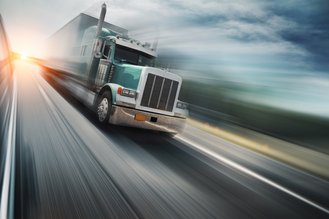 said he met with Tesla earlier this year to discuss what the Tesla Semi truck will be like that CEO Elon Musk announced last year and said would be revealed in September. It will be ideal for short-haul trucking and won’t have anything like the capacity of 1000-miles per fueling big rigs typically seen on U.S. highways. The Tesla Semi could work for companies needing freight hauling from ports to warehouses and other day trips. Tesla will face a series of challenges including ramping up later this year for the Tesla Model 3.
said he met with Tesla earlier this year to discuss what the Tesla Semi truck will be like that CEO Elon Musk announced last year and said would be revealed in September. It will be ideal for short-haul trucking and won’t have anything like the capacity of 1000-miles per fueling big rigs typically seen on U.S. highways. The Tesla Semi could work for companies needing freight hauling from ports to warehouses and other day trips. Tesla will face a series of challenges including ramping up later this year for the Tesla Model 3.